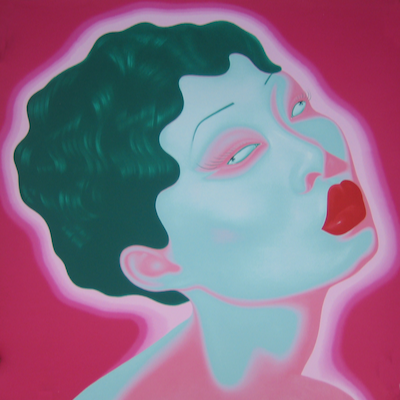
Details
Artist
Styles
Screen print, printed on 490 gram smooth custom paper // Feng Zhengjie’s Chinese Portrait (a) is a bold screen-print that encapsulates his iconic style, using neon colors and surreal features to explore themes of identity and modern beauty standards. This portrait features a stylized woman with vibrant red hair and striking red lips, set against a contrasting dark background with a radiant neon aura around her. Her pale face and slightly unfocused gaze impart a sense of detachment and mystery, emphasizing an almost alien quality. Feng’s use of exaggerated, vivid colors and smooth, graphic lines invokes pop-art aesthetics while critiquing societal ideals of beauty in contemporary Chinese culture. Limited to an edition of 200, Chinese Portrait (a) invites viewers to question the superficiality of visual representation and the impact of beauty ideals.
Chinese Portrait (a), 2008
form
Medium
Size
81 x 81 cm
- Inches
- Centimeters
Edition
Price
- USD
- EUR
- GBP
Details
Artist
Styles
Screen print, printed on 490 gram smooth custom paper // Feng Zhengjie’s Chinese Portrait (a) is a bold screen-print that encapsulates his iconic style, using neon colors and surreal features to explore themes of identity and modern beauty standards. This portrait features a stylized woman with vibrant red hair and striking red lips, set against a contrasting dark background with a radiant neon aura around her. Her pale face and slightly unfocused gaze impart a sense of detachment and mystery, emphasizing an almost alien quality. Feng’s use of exaggerated, vivid colors and smooth, graphic lines invokes pop-art aesthetics while critiquing societal ideals of beauty in contemporary Chinese culture. Limited to an edition of 200, Chinese Portrait (a) invites viewers to question the superficiality of visual representation and the impact of beauty ideals.
- Recently Added
- Price (low-high )
- Price (high-low )
- Year (low-high )
- Year (high-low )
What is Chinese contemporary art?
Chinese Contemporary Art is marked by a wide range of styles and experimental approaches. In the 1980s, avant-garde exhibitions were often shut down by government officials. The 1990s saw the rise of political pop and cynical realism, while China's One-Child Policy influenced artists to explore the individual as a subject matter.













